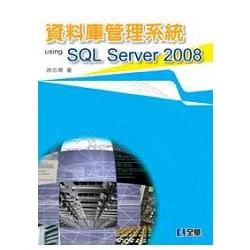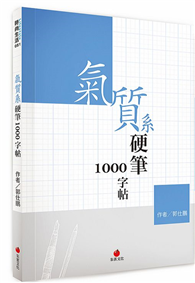第1章 資料庫導論
1-1 Examples of Database(資料庫的實例)
1-2 The Traditional File Processing Environment
(傳統檔案處理的環境)
1-3 The Integrated Database Environment(整合的資料庫環境)
1-4 Roles in the Database Enviornment
1-5 Data Sharing & Database(資料共享與資料庫)
1-6 Internet / Intranet, Web, 與Database
1-7 The History of Database Systems(資料庫管理系統的簡史)
1-8 Case Study(實例研究)
1-9 Summary(總結)
第2章 資料庫的環境
2-1 The Three-Level ANSI-SPARC Architecture(三層架構)
2-2 Database Languages
2-3 Data Characteristics 資料的特性
2-4 Conceptual Modeling and Logical Data Models
2-5 Functions of a DBMS
2-6 Components of a DBMS
2-7 SQL Server 2008 主要功能元件
2-8 Multi-User DBMS Architectures(多使用者資料庫管理系統的架構)
2-9 System Catalogs
第3章 資料庫的規劃設計與管理
3-1 資訊系統生命週期的概觀
3-2 The Database Application Life cycle(資料庫應用程式的生命週期)
3-3 資料庫設計的概觀
3-4 CASE Tools(電腦輔助軟體工程的工具)
3-5 Data Adminstration and Database Adminstration
(資料管理師與資料庫管理師)
3-6 DBMS Selection
第4章 SQL Server Management Studio
4-1 快速瀏覽SSMS 概觀
4-2 檢視 SSMS’s Options
4.3 Query Editor
第5章 關聯資料模式
5-1 Relational Model 的簡史
5-2 Terminology(術語)
5-3 Relational Data Manipulation Languages(關聯式資料維護語言)
5-4 Relational Integrity Constraints(整合性限制)
5-5 Views
5-6 Relational DBMS with Object-Like Extensions(在RDBMS 內支援Objects)
5-7 Normalization
5-8 Summary(總結)
第6章 建立並實作資料庫
6-1 Defining a Database
6-2 Introduction to SQL
6-3 Language Components
6-4 Database in SQL server
6-5 Creating a Database
6-6 Gathering Database Information (取得資料庫的資訊)
6-7 Resizing Your Database (重定資料庫的大小)
6-8 Renaming a Database (資料庫重命名)
6-9 Working with Database Filegroups
6-10 Removing a Database (移除資料庫)
6-11 Summary (總結)
第7章 SQL Server Login與安全性
7-1 SQL Server Security Access Model (安全性存取模式)
7-2 Logins
7-3 Server Logins and Database Users
7-4 Roles (角色)
7-5 Summary
第8章 存取權限
8-1 為何使用Permissions ?
8-2 Implementing Database Permissions1
8-3 SQL Server 的特殊存取權
8-4 Statement Permissions (敘述存取權限)
8-5 Object Permissions (物件存取權限)
8-6 Permissions on Views and Stored Procedures
8-7 Ownership Chains
8-8 制定存取權限的策略
第9章 建立並實作資料表格
9-1 Tables
9-2 Columns
9-3 SQL Server Identifiers
9-4 SQL Server Data Types
9-5 Computed columns
9-6 Create Tables
9-7 建立暫時性的Table
9-8 Dropping Tables
9-9 Modifying Tables
9-10 Creating the Tables of TinyWebStore Database
9-11 Creating the Relationships
9-12 Building a Relationship via T-SQL
9-13 All the Subsequent Relationships for the Other
Tables within TinyWebStore Database
9-14 Writing the Type Inserts
9-15 Diagramming the Database
第10章 整合性限制
10-1 How to Enforce Data Integrity (如何強化資料整合性)
10-2 Types of Integrity Constraints
10-3 Primary Key Constraints
10-4 Foreign Keys
10-5 Kinds of integrity (整合性的種類)
10-6 Application Versus DBMS-Enforced Integrity
(應用程式或資料庫管理系統強化整合性)
10-7 Traditional Methods of Integrity (傳統方法的整合性)
10-8 ANSI Constraints 和Declarative Integrity
Mechanisms
10-9 Q&A
第11章 建立索引
11-1 Why Use Indexes?
11-2 SQL Server Indexes
11-3 Index Usage
11-4 Index Maintenance
11-5 Creating an Index with the Table Designer
11-6 Creating an Index in Query Editor: Template
11-7 Index Selection (索引的選擇)
第12章 資料操作 (I):擷取運算
12-1 Using the Sample Database (使用範例資料庫)
12-2 The SELECT statement
12-3 Manipulating Data
12-4 System Functions
12-5 Data Conversion
12-6 Summarizing Query Results using Aggregate Functions (使用總合函數來總結查詢結果)
12-7 Organizing Query Results into Groups
12-8 Advanced Queries:retrieving data from multiple tables(高等查詢:從數個tables 中擷取資料)
第13章 資料操作 (II):資料的修飾
13-1 The Choices of Modify Data (修飾資料的選擇性)
13-2 Transaction Logging
13-3 Inserting
13-4 Deleting
13-5 Updating(更新已存在的資料:UPDATE 指令)
13-6 Reading and Writing Text and Image
第14章 控制流程敘述
14-1 Using Batches (使用批次)
14-2 Local and Global Variable (局部與整體變數)
14-3 Control-of-flow statements (控制流程敘述)
14-4 總結
第15章 視界
15-1 Views
15-2 Creating Views in Transact-SQL
15-3 Altering View
15-4 Dropping View (刪除視限)
15-5 Creating and Editing Views Using the Management Studio
15-6 Retrieving Data through Views (透過視界存取資料)
15-7 Data Modification through Views
15-8 Information on View (關於views 的資訊)
15-9 Benefits of Views
15-10 Q&A
第16章 預儲程序
16-1 What is Stored Procedure (甚麼是預儲程序)
16-2 Creating Stored Procedures
16-3 Gathering Information on Stored Procedures
16-4 Stored Procedure 的變更和刪除
16-5 Creating a Group of Procedures
16-6 Using the WITH RECOMPILE Option
16-7 Using the WITH ENCRYPTION Option
16-8 Stored Procedures Talk Back:Return Status and Parameters
16-9 Using Remote Stored Procedures
16-10 Qualifying Names Inside Stored Procedures (預儲程序內的限定識別名)
16-11 Renaming Procedures (重新命名程序)
16-12 Dropping Procedure (刪除程序)
16-13 自動重新編譯
16-14 Benefits of Stored Procedure (預儲程序的優點)
16-15 System procedure
16-16 Summary
第17章 Cursor
17-1 What is Cursor
17-2 Client Cursor 與Server Cursor 之間的不同
17-3 How SQL Server Processes Cursors (SQL Server 如何處理cursors)
17-4 Some Examples of Using a Cursor (使用cursor的實例)
第18章 異動處理
18-1 What is a Transaction? (什麼是異動)
18-2 Implicit Transaction (隱含的異動)
18-3 User-defined Transactions (使用者定義的異動)
18-4 Nesting Transaction
18-5 Data Consistency (資料的一致性)
18-6 How to Solve the Three Concurrent Problems(如何解決三個concurrence 的問題)
18-7 Deadlock and Livelock
18-8 Two-phase Locking (兩段式鎖定)
18-9 Timestamp-Based Protocols
18-10 Two Phase Commit Protocol (兩階段確認的協定)
18-11 Type of Database Failure (資料庫故障的類型)
18-12 Basic Recovery Facilities (基本的回復設備)
18-13 SQL Server Database Backup and Recovery
18-14 Summary (總結)
第19章 觸發程式
19-1 Multiple Column Integrity (多重欄位的整合性)
19-2 What is Triggers
19-3 Create Triggers
19-4 Drop trigger (刪除觸發程式)
19-5 Enforcing Data Integrity (強制資料整合性)
19-6 Encapsulating Business Rules (封包商業規則)
19-7 Enforcing Referential Integrity
19-8 How Triggers Work (觸發程式如何運作)
19-9 Examples of Triggers (觸發程式的範例)
19-10 Nested Trigger
19-11 使用e-mail 的triggers
19-12 Information on Triggers (關於triggers 的資訊)
19-13 Q & A
19-14 Quiz
附錄A The Tables of Sample Database Pubs
附錄B 習題參考解答
66080 教師手冊--資料庫管理系統(光碟版,含ppt投影片及習解)
| FindBook |
有 4 項符合
資料庫管理系統Using SQL Server 2008的圖書 |
 |
資料庫管理系統Using SQL Server 2008 作者:游志男 出版社:全華圖書股份有限公司 出版日期:2009-04-17 語言:繁體書 |
| 圖書選購 |
| 型式 | 價格 | 供應商 | 所屬目錄 | $ 617 |
中文書 |
$ 618 |
社會人文 |
$ 618 |
高等教育 |
$ 650 |
資訊學群 |
|---|
| 圖書館借閱 |
| 國家圖書館 | 全國圖書書目資訊網 | 國立公共資訊圖書館 | 電子書服務平台 | MetaCat 跨館整合查詢 |
| 臺北市立圖書館 | 新北市立圖書館 | 基隆市公共圖書館 | 桃園市立圖書館 | 新竹縣公共圖書館 |
| 苗栗縣立圖書館 | 臺中市立圖書館 | 彰化縣公共圖書館 | 南投縣文化局 | 雲林縣公共圖書館 |
| 嘉義縣圖書館 | 臺南市立圖書館 | 高雄市立圖書館 | 屏東縣公共圖書館 | 宜蘭縣公共圖書館 |
| 花蓮縣文化局 | 臺東縣文化處 |
|
|
圖書介紹 - 資料來源:TAAZE 讀冊生活 評分:
圖書名稱:資料庫管理系統Using SQL Server 2008
■ 本書特色
*本書兼具理論與實務,對讀者可能感到難懂的地方,都講得格外詳細,是一本完整的資料庫教科書兼工具書。有助於讀者專業技術的提昇。*本書已將資料庫管理系統的全貌,透過作者的描述完整呈現於讀者面前,使譯者不僅可以輕易理解,更樂於應用在學校或職場的專案工作上。*本書針對讀者未來工作上的需要,循序漸進以讀者最容易接受的型式來表達。作者以讓讀者花最經濟的時間得最大效益的精神來撰書,以節省廣泛讀者的時間。
■ 內容簡介
大量的實作範例引讀者認識並實作Microsoft SQL Server 2008資料庫系統;並以資料庫管理從業人員慣用之語法寫作,讓讀者宛如實際投身資料庫開發領域,一看就懂。是一本理論與實務並濟,與現實作業接軌,帶領讀者紮穩資料庫設計基礎的好書。
目錄
第1章 資料庫導論
1-1 Examples of Database(資料庫的實例)
1-2 The Traditional File Processing Environment
(傳統檔案處理的環境)
1-3 The Integrated Database Environment(整合的資料庫環境)
1-4 Roles in the Database Enviornment
1-5 Data Sharing & Database(資料共享與資料庫)
1-6 Internet / Intranet, Web, 與Database
1-7 The History of Database Systems(資料庫管理系統的簡史)
1-8 Case Study(實例研究)
1-9 Summary(總結)
第2章 資料庫的環境
2-1 The Three-Level ANSI-SPARC Architecture(三層架構...
1-1 Examples of Database(資料庫的實例)
1-2 The Traditional File Processing Environment
(傳統檔案處理的環境)
1-3 The Integrated Database Environment(整合的資料庫環境)
1-4 Roles in the Database Enviornment
1-5 Data Sharing & Database(資料共享與資料庫)
1-6 Internet / Intranet, Web, 與Database
1-7 The History of Database Systems(資料庫管理系統的簡史)
1-8 Case Study(實例研究)
1-9 Summary(總結)
第2章 資料庫的環境
2-1 The Three-Level ANSI-SPARC Architecture(三層架構...
»看全部
商品資料
- 作者: 游志男
- 出版社: 全華圖書股份有限公司 出版日期:2009-04-17 ISBN/ISSN:9572169971
- 語言:繁體中文 裝訂方式:平裝 頁數:744頁
- 類別: 中文書> 電腦> 應用軟體
|











